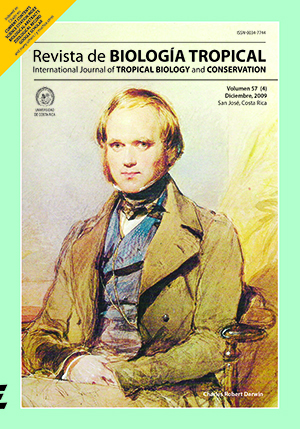Resumen
El pez dulceacuícola P. axelrodi es de gran importancia comercial en la Orinoquía Colombiana y a nivel mundial, pero carece de estudios acerca de su visión. Se utilizaron diez individuos, con longitud total promedio de 2.7 cm (SD= 0.2, n= 20). Se realizaron cortes a 8 µm y se tiñeron con H-E. El tamaño relativo del ojo es 9.8% (SD= 1.1, n= 20); el cristalino tiene un tamaño relativo de 64.3% (SD= 4.9, n=20). Una esclerótica con tejido cartilaginoso. La retina está constituida por ocho capas y dos membranas, hay areae centrales en la zona posterior, por lo tanto tiene mayor espesor que la zona lateral. El espesor promedio de las estructuras es: retina lateral: 144.5 µm (SD= 5.4, n= 20), retina temporal: 210.4 vm (SD= 14.8, n= 20); cristalino (esférico): dorso-ventral 759.6 µm (SD= 31.7, n= 20) y antero-posterior 763.4 µm (SD= 30.7, n= 20) ycórnea: 27.6 µm (SD= 4.3, n= 20). El tamaño relativo del ojo, relacionado con la presencia de areae centrales y una córnea delgada, muestra las necesidades visuales del neón cardenal (cazador) para adaptarse al hábitat, lo que hace necesario tener un sistema visual desarrollado que le permita tener mejor sensibilidad y resolución visual.##plugins.facebook.comentarios##

Esta obra está bajo una licencia internacional Creative Commons Atribución 4.0.
Derechos de autor 2009 Revista de Biología Tropical
Descargas
Los datos de descargas todavía no están disponibles.






